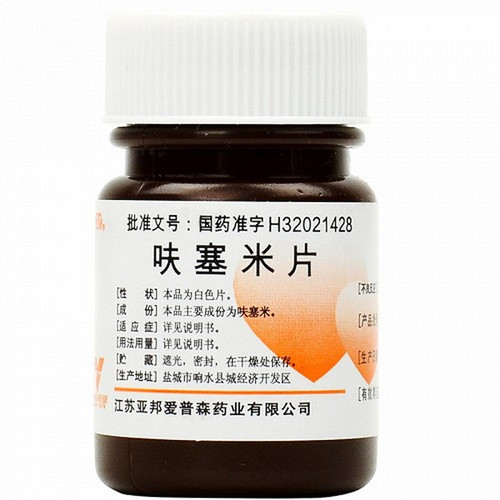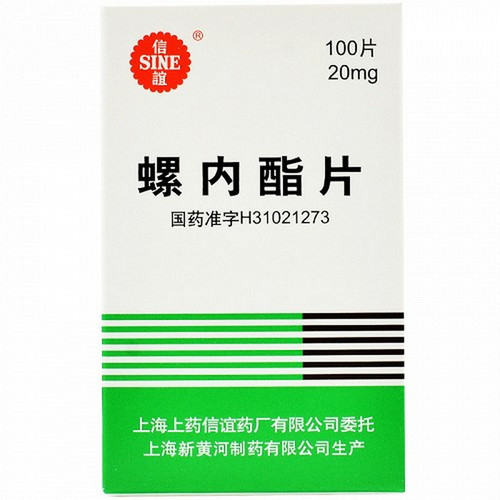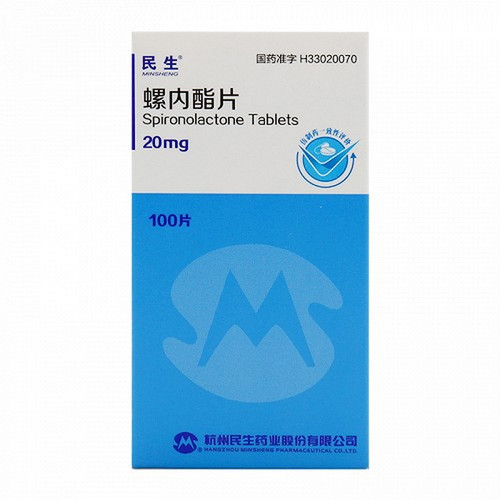Product Overview
[Drug Name]
Generic Name: Furosemide Tablets
Trade Name: Lisheng Furosemide Tablets 20mg x 100 Tablets
[Main Ingredients]
The main ingredient of this product is furosemide, whose chemical name is 2-[(2-furylmethyl)amino]-5-(sulfamoyl)-4-chlorobenzoic acid. Molecular Formula: C₁₂H₁₁₁ClN₂O₅S. Molecular Weight: 330.75
[Properties]
This product is a white tablet.
[Indications/Main Functions]
1. Edema disorders, including congestive heart failure, cirrhosis, and renal disease (nephritis, nephropathy, and acute and chronic renal failure due to various causes). This class of drugs may still be effective, especially when other diuretics are ineffective. It can be used in combination with other drugs to treat acute pulmonary edema and acute cerebral edema. 2. Hypertension. While generally not the first choice for treating essential hypertension, this class of drugs is particularly suitable when thiazides are ineffective, especially when accompanied by renal insufficiency or hypertensive crisis. 3. Prevention of acute renal failure. It is used for various causes of renal insufficiency, such as dehydration, shock, poisoning, anesthesia accidents, and circulatory insufficiency. Prompt administration while correcting hypovolemia can reduce the risk of acute tubular necrosis. 4. Hyperkalemia and hypercalcemia. 5. Dilutional hyponatremia, especially when the serum sodium concentration is below 120 mmol/L. 6. Syndrome of excessive secretion of antidiuretic hormone (SIADH). 7. Acute drug poisoning, such as barbiturate poisoning.
[Specification]
20mg*100 tablets
[Usage and Dosage]
1. Adults (1) Treatment of edematous diseases. The starting dose is 20-40 mg (1-2 tablets) taken orally once a day. If necessary, an additional 20-40 mg (1-2 tablets) can be added after 6-8 hours until a satisfactory diuretic effect is achieved. Although the maximum dose can reach 600 mg (30 tablets) per day, it should generally be controlled within 100 mg (5 tablets) and taken in 2-3 divided doses to prevent excessive diuresis and adverse reactions. For some patients, the dose can be reduced to 20-40 mg (1-2 tablets) every other day, or taken continuously for 2-4 days per week, 20-40 mg (1-2 tablets) per day. (2) Treatment of hypertension. Start with 40-80 mg (2-4 tablets) per day, taken in 2 doses, and adjust the dose as appropriate. (3) Treatment of hypercalcemia. Take 80-120 mg (4-6 tablets) orally daily, taken in 1-3 doses. 2. Infants with premature ejaculation: For the treatment of edema, initially administer 2 mg/kg orally based on body weight. Increase the dose by 1-2 mg/kg every 4-6 hours if necessary. Dosage intervals should be extended for neonates.
[Adverse Reactions]
Common adverse reactions are related to fluid and electrolyte imbalances, especially with high doses or prolonged use. These include orthostatic hypotension, shock, hypokalemia, hypoxemia, hypochloremic alkalosis, hyponatremia, hypocalcemia, and associated thirst, fatigue, muscle aches, and arrhythmias. Less common adverse reactions include allergic reactions (including rash, interstitial nephritis, and even cardiac arrest), blurred vision, xanthoopia, photosensitivity, dizziness, headache, sodium deficit, nausea, vomiting, abdominal pain, diarrhea, pancreatitis, muscle rigidity, bone marrow suppression leading to granulocytopenia, thrombocytopenic purpura, and aplastic anemia, liver damage, paresthesia of the digits, hyperglycemia, positive urine glucose, exacerbation of pre-existing diabetes, and hyperuricemia. Tinnitus and hearing impairment are more common when a large dose of intravenous rapid injection (dose greater than 4-15 mg per minute) is given. Most of them are temporary, and a few are irreversible, especially when used simultaneously with other ototoxic drugs. In the case of hypercalcemia, it can cause kidney stones. There are also reports that this drug can aggravate idiopathic edema.
[Contraindications]
Not yet clear.
[Drug Interactions]
(1) Adrenal glucose, mineralocorticoids, adrenocorticotropic hormone and estrogen can reduce the diuretic effect of this drug and increase the chance of electrolyte imbalance, especially hypokalemia. (2) Non-steroidal anti-inflammatory analgesics can reduce the diuretic effect of this drug and increase the chance of renal damage. This is related to the former inhibiting prostaglandin synthesis and reducing renal blood flow. (3) When used in combination with sympathomimetic drugs and anticonvulsants, the diuretic effect is weakened. (4) When used in combination with clofibrate (clofibrate), the effects of both drugs are enhanced, and muscle soreness and stiffness may occur. (5) When used in combination with dopamine, the diuretic effect is enhanced. (6) Alcohol, alcohol-containing preparations, and drugs that can cause a decrease in blood pressure can enhance the diuretic and antihypertensive effects of this drug; when used in combination with barbiturates and anesthetics, it can easily cause orthostatic hypotension. (7) This drug can reduce uric acid excretion and increase blood uric acid. Therefore, when used in combination with drugs for the treatment of gout, the latter's dose should be appropriately adjusted. (8) Reduce the efficacy of hypoglycemic drugs. (9) Reduce the effects of anticoagulants and antifibrinolytic drugs, mainly due to the decrease in blood volume after diuresis, which leads to an increase in the concentration of coagulation factors in the blood, and the improvement of liver blood supply and increased synthesis of coagulation factors by diuresis. (10) This drug enhances the effects of non-depolarizing muscle relaxants, which is related to a decrease in blood potassium. (11) When used in combination with antibiotics such as amphotericin, cephalosporins, and aminoglycosides, nephrotoxicity and ototoxicity are increased, especially in cases of pre-existing renal damage. (12) When used in combination with antihistamines, ototoxicity increases, and tinnitus, dizziness, and vertigo are more likely to occur. (13) When used in combination with lithium, nephrotoxicity increases significantly and should be avoided as much as possible. (14) Intravenous injection of this product after taking chloral hydrate may cause sweating, facial flushing, and increased blood pressure. This is related to the increase in thyroid metabolism from bound to free state. (15) When used in combination with sodium bicarbonate, the chance of hypochloremic alkalosis increases.
[Precautions]
1. Cross-allergy. Patients allergic to sulfonamides and thiazide diuretics may also be allergic to this drug. 2. Interference with diagnosis: It may cause elevated blood sugar and positive urine glucose, especially in patients with diabetes or prediabetes. Excessive dehydration may temporarily increase blood uric acid and urea nitrogen levels. Blood Na+, Cl-, K+, Ca2+, and Mg2+ concentrations may decrease. 3. Use with caution in the following conditions: ① Anuria or severe renal impairment; the latter requires higher doses, so the dosing interval should be extended to avoid side effects such as ototoxicity; ② Diabetes; ③ Hyperuricemia or a history of gout; ④ Severe liver impairment, as water and electrolyte imbalances may induce hepatic coma; Acute myocardial infarction, where excessive diuresis may precipitate shock; Pancreatitis or a history of this condition; ① Patients prone to hypokalemia, especially those taking digitalis or with ventricular arrhythmias; Lupus erythematosus, as this drug may aggravate or precipitate activity; Prostatic hyperplasia. 4. Follow-up examinations: ① Blood electrolytes, especially for patients taking concomitant digitalis or corticosteroids, or for those with impaired liver and kidney function; ② Blood pressure, especially for antihypertensive use, high-dose use, or use in the elderly; ③ Renal function; ④ Liver function; Blood sugar; Blood uric acid; ① Acid-base balance; Hearing function. 5. Medication dosage should be started at the minimum effective dose and then adjusted based on diuretic response to minimize side effects such as fluid and electrolyte imbalances. 6. Potassium supplementation should be performed if hypokalemia or a tendency toward hypokalemia is present. 7. When used concomitantly with antihypertensive medications, the latter's dose should be adjusted as appropriate. 8. If oliguria or anuria persists after 24 hours at the maximum dose, the drug should be discontinued. 9. Use with caution in athletes.
[Pediatric Use]
This drug has a significantly prolonged half-life in neonates, so the dosing interval should be extended.
[Elderly Use]
Elderly patients are more likely to experience hypotension, electrolyte imbalances, thrombosis, and renal impairment when taking this drug.
[Overdose]
Unclear
[Pharmacology and Toxicology]
This drug is a potent diuretic with the following mechanisms of action: 1. Effects on water and electrolyte excretion. It increases the excretion of water, sodium, chloride, potassium, calcium, magnesium, and phosphorus. Unlike thiazide diuretics, furosemide and other diuretics exhibit a clear dose-response relationship. The diuretic effect increases significantly with increasing dose, and the dosage range is wide. This class of drugs primarily inhibits active reabsorption of NaCl in the thick-walled medullary segment of the renal tubule. This results in increased Na+ and Cl- concentrations in the luminal fluid and decreased Na+ and Cl- concentrations in the interstitial fluid. This decreases the osmotic pressure gradient and impairs the renal tubular concentrating function, leading to increased excretion of water, Na+, and Cl-. Reduced Na+ reabsorption increases Na+ concentration in the distal tubule, promoting increased Na+-K+ and Na+-H+ exchange, and increasing K+ and H+ excretion. As for the mechanism by which furosemide inhibits Cl- reabsorption in the thick-walled ascending limb of the medullary tubule, it was previously believed that a chloride pump existed in this area. Current research indicates that a Na+ and Cl- paired transport system, associated with the Na+-K+ ATPase, exists on the lateral side of the basement membrane of this region. Furosemide reduces Na+ and Cl- reabsorption by inhibiting this system. Furthermore, furosemide may also inhibit Na+ and Cl- reabsorption in the proximal and distal tubules, promoting K+ secretion in the distal tubule. Furosemide increases Ca2+ and Mg2+ excretion by inhibiting Ca2+ and Mg2+ reabsorption in the medullary limb. Short-term use can increase uric acid excretion, while long-term use can cause hyperuricemia. 2. Effects on hemodynamics. Furosemide inhibits the activity of prostaglandin degrading enzymes, increasing prostaglandin E2 levels and thus exerting a vasodilatory effect. Dilation of renal vasculature, reduction of renal vascular resistance, and increased renal blood flow, particularly deep renal cortical blood flow, are crucial for furosemide's diuretic effect and form the theoretical basis for its use in preventing acute renal failure. Furthermore, unlike other diuretics, furosemide increases tubular fluid flow without decreasing glomerular filtration rate, possibly due to reduced chloride flow through the macula densa, thereby weakening or disrupting glomerular-tubular balance. Furosemide dilates pulmonary capacitance veins and reduces pulmonary capillary permeability. Combined with its diuretic effect, this reduces ventricular return and lowers left ventricular end-diastolic pressure, potentially aiding the treatment of acute left ventricular failure. Furosemide's ability to reduce pulmonary capillary permeability provides a theoretical basis for its use in the treatment of adult respiratory distress syndrome.









